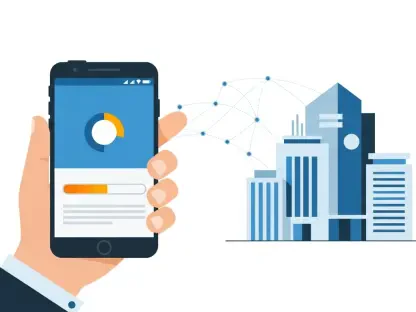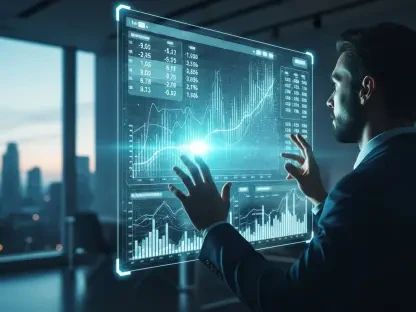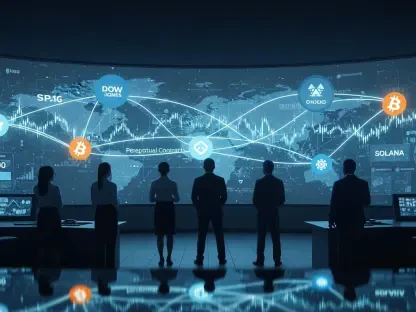If you’re looking for a new and potentially extremely profitable investment opportunity, then Non-Fungible Tokens (NFTs) could be a solid option. These digital assets are the latest trend that has taken Wall Street by storm, and it’s even made investors second-guess their investment choices. NFTs are like the Mona Lisa, and each one has its own unique little fingerprint. That’s NFTs for you – digital assets that are as unique as the rarest diamonds on Earth.
Remember when NFTs were all about zany digital art and those funky little GIFs? Well, they’ve grown up, and fast. NFTs are changing from a niche hobby into a tool for some serious financial transactions. And if you think about it, anything that has some value can be turned into an NFT, whether it be the deed to your beach house or a slice of your startup. That’s why we will look a little deeper into how this crazy concept works, how people are making some serious cash, and how to get started.
The Mechanics of NFTs in Financial Contexts
Okay, let’s analyze this. Blockchain technology, which may be thought of as an extremely transparent and impenetrable digital record, is the foundation around which NFTs are based. Like digital DNA, every NFT has a unique code that identifies it and provides information about its ownership. This is important for finance since it allows you to follow the history of an asset from its inception to the present, guaranteeing that everything is legitimate.
Converting Physical Assets into Digital Forms
Tokenization is where things get interesting. What this basically is, is taking something tangible, like a piece of high-end real estate or a vintage car, and turning it into a digital token. This token signifies your ownership or a share of that asset. It’s almost like owning a piece of the pie, but in the cyber world. What’s also cool about this is it opens up investment opportunities to more people. Back in the day, you needed to be a millionaire in order to invest in prime real estate. Now, you can own a fraction of it through an NFT.
The Legal Framework
It goes without saying that anything that can get a little complicated from time to time needs a robust legal side. And with NFTs, there are a few gray areas that need guidelines to ensure the legality of it all. I mean, we’re talking about who legally owns an asset and what rights they have. This is new territory, but it’s crucial to make sure your investment is protected. The laws are still evolving and catching up to the speed with which NFTs are changing the whole time, but one thing’s clear: understanding what’s between the lines of NFTs is as important as understanding the asset itself. And, at the end of the day, you want to make sure that your tokens are just as secure and legitimate as your traditional investments.
NFTs Transforming Asset Management
There are people out there who’ve gotten creative with NFTs. Take Vincent van Gogh’s Starry Night. Have you ever, in your wildest dreams, thought that you could own it? Or maybe even just a tiny piece of it? Well, now, that’s theoretically possible because its what’s been happening in the world of NFTs. Famous paintings, historic buildings, or even a chunk of land have been tokenized – chopped into digital pieces – and sold as NFTs.
The Impact of NFTs on Traditional Asset Management
Way back when, with the speed at which the world’s evolving, is only back in 2017, you needed a lot of experts on your side to get into the investment world. Traditionally, if you wanted a slice of the high-value investment pie, like a piece of exclusive real estate or a rare bit of art, you needed a truckload of cash, brokers, and intermediaries, and that’s not even mentioning the red tape. These investments were pretty much a VIP club – no regular kids allowed. But here’s where NFTs are flipping the script.
It’s affordable, flexible, and easy to manage, making it a winning recipe for the middle-class citizens of the world. People are starting to look at assets not just as physical things, but as something more accessible. And here’s another kicker – thanks to blockchain technology, everything’s transparent and streamlined. Ownership transfer? Just a few clicks. Checking the authenticity? Easy. It’s making the whole process smoother, faster, and a lot more user-friendly.
The Risks of NFTs
Jumping into the world of NFTs in finance isn’t always smooth sailing and huge pay-days. One of the big headaches? Regulation. The rules around NFTs are still pretty much the Wild West, to put it bluntly. Governments and financial authorities have been trying to figure out how to deal with these digital assets, but it’s a slippery slope and uncharted territory. Do they classify them as securities, commodities, or something totally new? This uncertainty can be a bit of a red flag for investors and even the creators of NFTs, because if there aren’t clear guidelines on how to regulate your investment, how do you even know it’s safe?
Market Volatility
Then there’s the rollercoaster of market volatility. NFTs can be like that unpredictable friend who’s relaxed one minute and bouncing off the walls the next. These tokens’ prices can skyrocket or plummet based on trends, hype, or even a single tweet from a celebrity. For investors used to more stable assets, this can feel like a wild ride that’s not worth the trouble. And if you’re trying to figure out how much an NFT is actually worth? That’s another puzzle. Unlike stocks or real estate, where you have clear metrics and historical data, valuing NFTs is still an abstract art form that changes with the tides.
Addressing Counterfeit Concerns
This is always an issue with something tangible and valuable; it can be faked, and boy, have people tried. Just because NFTs live on a blockchain doesn’t mean they’re immune to fraudsters and criminals. And sadly, there have been cases of people creating NFTs of artwork they don’t own or selling counterfeit digital assets. So, while NFTs are the exciting, shiny new toy in finance, they also come with their fair share of challenges. It’s like exploring a new frontier; it’s thrilling, but you’ve got to watch your step.
How to Get Started with NFTs
First things first, you’ve got to get your head around the basics. This means understanding what NFTs are, how blockchain works, and what makes these digital assets so unique and valuable. There are tons of resources out there that can point you in the right direction. And don’t skip this part! A strong grasp of the basics is key to making informed decisions later.
Setting Up Your Digital Wallet
Before you can become an NFT guru, you need a digital wallet – this is where you’ll store your digital assets and cryptocurrencies. Do your homework and choose one that’s safe and gets the job done. And make sure you understand exactly how to keep your wallet secure. You get things like private keys and backup phrases that are crucial for keeping your digital assets safe.
Getting to Know NFT Marketplaces
Once you’ve got your wallet up and running, you can go ahead and see all there is to offer on the NFT marketplaces. This is where NFTs are bought, sold, and traded. Platforms like OpenSea, Rarible, and Foundation are some of the big fish in the sea of tokens, so you’re spoilt for choice. Spend some time browsing these marketplaces to explore how they work and what assets are available.
Starting Small
When you’re just starting out, it’s a good idea to take it easy and dip your toes in one by one. How about buying a low-cost NFT to get a feel for the process? And don’t forget that, just like the traditional investment options, NFTs can be volatile, so slow and steady always wins the race.
Conclusion
You can’t deny that NFTs have ignited a newfound fire in the investment world, and it has brought along a whole new audience of individuals who never thought it would be possible for them to call themselves investors. What makes it more interesting is the sheer thought of possibly owning a piece of rare and famous art, or prime real estate somewhere in the Caribbean.
Even though buying and selling NFTs can be risky and volatile, the truth is that all investments come with a certain risk factor, and the odds of the tokens plummeting are always present. However, it’s up to you to determine whether the reward outweighs the risk, and if you decide to proceed, to take it easy and scope out the scene before investing your life savings.
The concept of NFTs paints a clear picture of the world’s shift to digitalization. This movement may be constantly changing, and governments may still be trying to figure out how to keep the reins on something that’s decentralized and not owned by any one person. However, one thing is for sure: it’s a space worth watching, learning about, and, perhaps, participating in. The future is here, and it’s tokenized.









